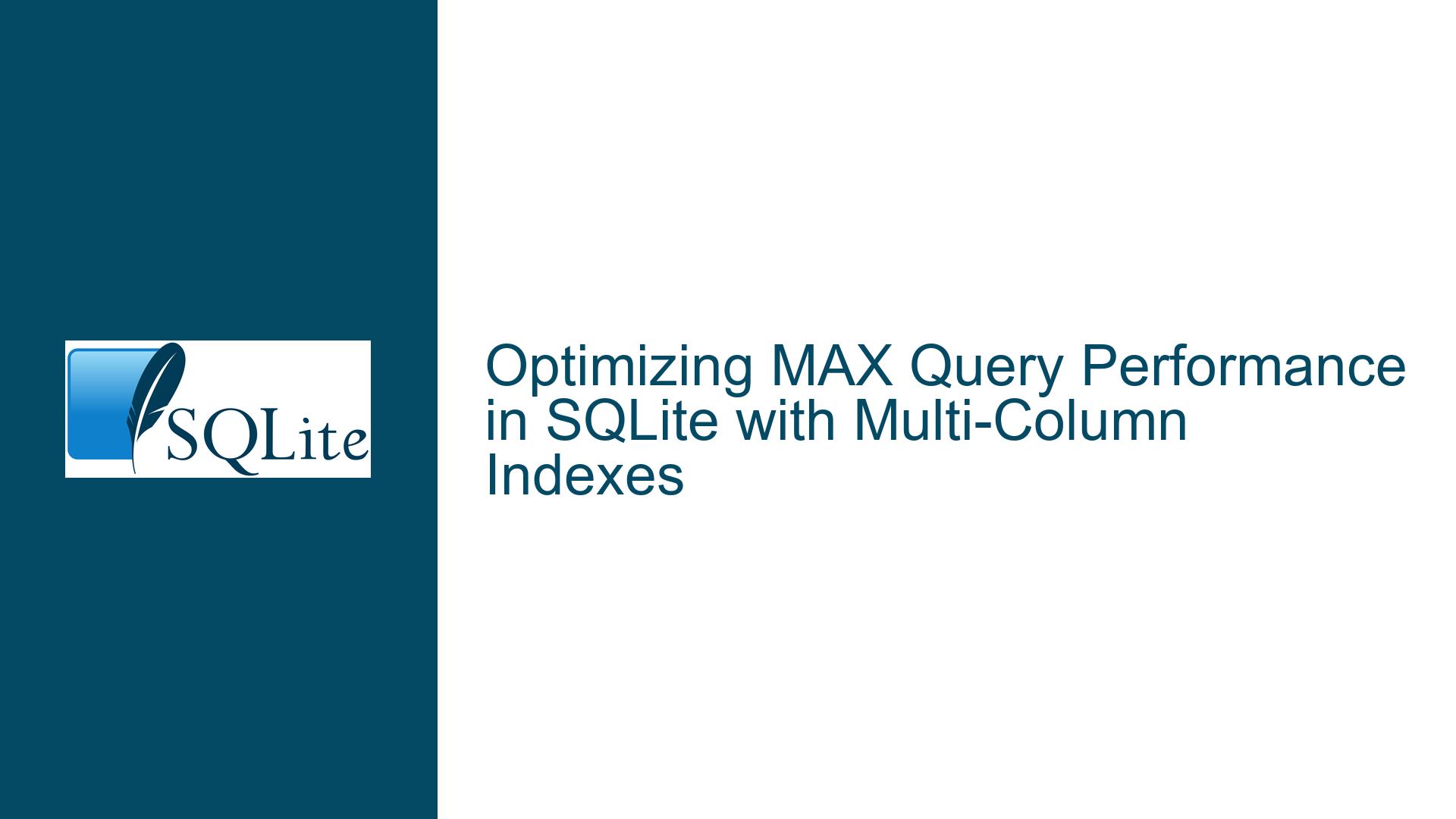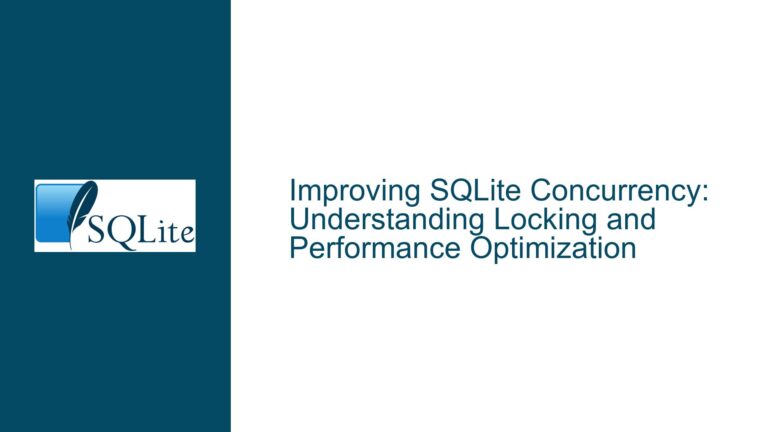Optimizing MAX Query Performance in SQLite with Multi-Column Indexes
Understanding the Performance Degradation in MAX Queries with Grouping
The core issue revolves around a performance degradation observed when executing a query that retrieves the maximum value of a column (id) grouped by another column (stream) in an SQLite database. The schema includes a table named events with columns id, stream, and data. An index events_stream_id is created on the combination of stream and id in descending order. The query in question aims to fetch the maximum id for each stream where the stream matches a given value or set of values. Despite the presence of a covering index, the query performance deteriorates as more rows are inserted into the table.
The query plan indicates that SQLite is utilizing the covering index events_stream_id to search the table. However, the query involves a GROUP BY clause and an IN operator, which complicates the optimization process. The SQLite query optimizer, while powerful, struggles to apply the min/max optimization in this scenario due to the structure of the index and the nature of the query. This results in a full scan of the index, leading to slower performance as the dataset grows.
Exploring the Root Causes of Query Inefficiency
The inefficiency of the query stems from several factors related to the schema design, index usage, and query structure. First, the index events_stream_id is a composite index on stream and id in descending order. While this index is designed to optimize queries filtering by stream and ordering by id, it does not fully align with the requirements of the GROUP BY and IN operations in the query. The IN operator, even when used with a single value, introduces complexity that prevents the optimizer from leveraging the min/max optimization effectively.
Second, the query planner is forced to scan the entire index to satisfy the GROUP BY clause. This is because the optimizer cannot guarantee that the first row encountered for each stream in the index will contain the maximum id without examining all relevant rows. As the number of rows increases, the time required to scan the index grows proportionally, leading to the observed performance degradation.
Third, the use of a composite index with two columns (stream and id) complicates the optimization process. The min/max optimization described in the SQLite documentation primarily applies to single-column indexes or the leftmost column of a composite index. In this case, the presence of the stream column as the first part of the index prevents the optimizer from directly accessing the maximum id for each stream without scanning the index.
Strategies for Resolving Performance Issues in MAX Queries with Grouping
To address the performance issues, several strategies can be employed, each targeting different aspects of the problem. The first approach involves simplifying the query to eliminate the GROUP BY clause and the IN operator. By restructuring the query to fetch the maximum id for a single stream at a time, the optimizer can apply the min/max optimization more effectively. This can be achieved by executing multiple queries, each targeting a specific stream, and combining the results programmatically.
Another approach is to use a temporary table or a common table expression (CTE) to store the list of stream values and then join this list with the events table to fetch the maximum id for each stream. This method allows the optimizer to process each stream independently, leveraging the min/max optimization for each individual query. The use of a temporary table or CTE also simplifies the query structure, making it easier for the optimizer to generate an efficient execution plan.
A third strategy involves modifying the schema to include a separate table that stores the maximum id for each stream. This denormalized approach reduces the need for complex queries by precomputing the required values. Whenever a new row is inserted into the events table, a trigger can update the corresponding maximum id in the separate table. This ensures that the maximum values are always up-to-date and can be retrieved with a simple query, eliminating the need for expensive GROUP BY operations.
Additionally, the use of SQLite’s carray extension can be considered to pass a list of stream values to the query. This extension allows the query to treat the list of values as a virtual table, enabling the optimizer to process each value independently. By binding the list of stream values to the query using carray, the optimizer can apply the min/max optimization to each value, resulting in improved performance.
Finally, it is essential to analyze the query execution plan using the EXPLAIN QUERY PLAN statement to understand how the optimizer is processing the query. This analysis can reveal inefficiencies in the query plan and guide the selection of appropriate indexes or query restructuring techniques. By iteratively refining the query and analyzing the execution plan, it is possible to achieve optimal performance even for complex queries involving GROUP BY and IN operators.
In conclusion, the performance degradation observed in the MAX query with grouping can be attributed to the complexity introduced by the GROUP BY clause and the IN operator, as well as the structure of the composite index. By simplifying the query, leveraging temporary tables or CTEs, denormalizing the schema, using the carray extension, and analyzing the query execution plan, it is possible to resolve the performance issues and achieve efficient query execution in SQLite.






